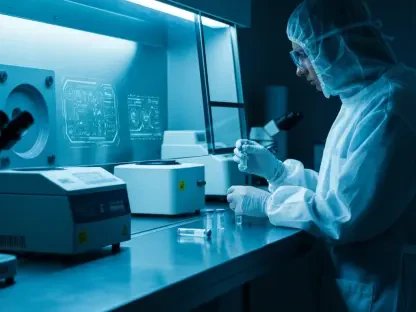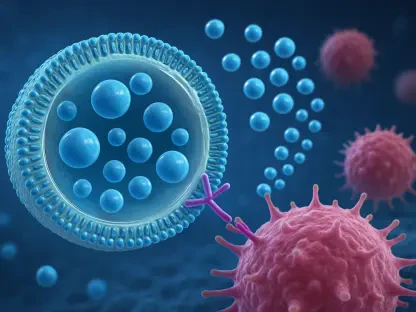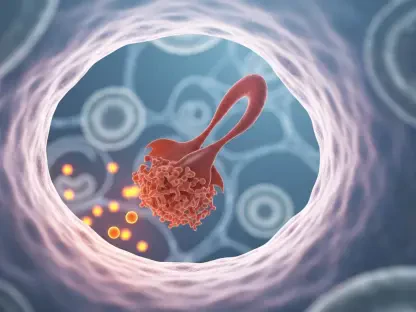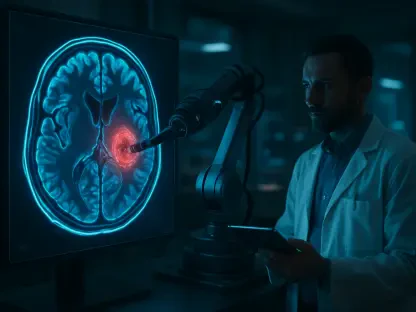In today’s interview, we have the pleasure of speaking with Ivan Kairatov, a biopharma expert renowned for his expertise in technology and innovation within the industry. With extensive experience in research and development, Ivan provides invaluable insights into the current challenges and advancements in treating lung squamous cell carcinoma (LSCC). Our discussion will delve into the complexities of LSCC treatment, the importance of genetic profiling, and the future of personalized medicine.
Can you provide an overview of the current challenges in treating lung squamous cell carcinoma (LSCC)?
Lung squamous cell carcinoma presents significant treatment challenges due to its genetic complexity and the limited number of detectable mutations suitable for targeted therapy. Unlike other types of non-small cell lung cancer, LSCC does not have as many established targets for precision medicine, which complicates treatment efforts. There’s also the issue of LSCC’s molecular heterogeneity, which means treatments must be highly individualized to be effective. This lack of clear targets makes it imperative to continue research to uncover more about the underlying mutations that drive the disease.
How does next-generation sequencing help in identifying driver mutations in LSCC?
Next-generation sequencing plays a crucial role in identifying driver mutations in LSCC by allowing comprehensive analysis of the cancer genome. It provides detailed information about genetic alterations across a large panel of genes, revealing potential mutations that may drive cancer progression. Through this technology, we can understand the mutational landscape of LSCC more clearly, identify potential therapeutic targets, and tailor treatments that are more likely to be effective, thereby advancing personalized medicine.
What are the most prevalent mutations detected in your study on LSCC, and how frequently do they occur?
Our study identified several prevalent mutations in LSCC, with TP53 mutations being the most common, occurring in approximately 30.85% of cases. This was followed by mutations in NF1 at 20.20%, PTEN at 11.70%, PIK3CA at 5.31%, FBXW7 at 4.25%, and KRAS at 3.20%. These findings highlight the diverse genetic landscape of LSCC and underscore the need to consider a wide array of mutations when developing targeted therapies.
Could you explain the significance of the mutations TP53, NF1, PTEN, PIK3CA, FBXW7, and KRAS in LSCC?
Each of these mutations plays a different role in cancer biology. TP53 is a well-known tumor suppressor gene, and its mutation often leads to uncontrolled cell growth. NF1 mutations can disrupt cell signaling pathways that regulate growth. PTEN is another tumor suppressor, and its loss can result in increased survival and proliferation of cancer cells. PIK3CA mutations can activate pathways that promote tumor growth, while FBXW7 is involved in protein degradation, and its mutation can lead to the accumulation of oncogenic proteins. KRAS mutations are common in various cancers and are known for driving cancer progression. Understanding these mutations provides insight into how LSCC develops and progresses, offering potential targets for intervention.
What clinicopathological factors did you find to be associated with the PIK3CA mutation in LSCC patients?
In our study, we found that the PIK3CA mutation was associated with several clinicopathological factors. Notably, patients with this mutation tended to have a lower mean age. Additionally, PIK3CA mutations were linked to more severe inflammatory reactions and were associated with advanced pathological T and N stages according to the TNM staging system. These associations may impact prognosis and treatment strategies for affected patients.
What relationship did your study find between PTEN mutations and inflammatory reactions in LSCC patients?
We discovered a statistically significant relationship between PTEN mutations and mild inflammatory reactions in LSCC patients. This suggests that the presence of PTEN mutations might influence the tumor microenvironment, potentially altering the immune response within the body. This connection could provide insights into developing therapies that target the inflammatory pathways involved in LSCC.
How did the central localization of LSCC tumors correlate with PTEN mutations?
Our findings indicated an association between PTEN mutations and the central localization of LSCC tumors. This suggests that tumors with PTEN mutations might have distinct growth patterns and localization compared to those without such mutations. Understanding these correlations could help in predicting tumor behavior and tailoring treatment plans appropriately.
Can you describe the significance of NF1 mutations in relation to visceral pleural involvement in LSCC?
NF1 mutations were found to correlate with visceral pleural involvement in LSCC, indicating that such mutations might contribute to more aggressive tumor behavior. The involvement of the visceral pleura often implies a higher stage of the disease, which can complicate treatment efforts and affect prognosis. Highlighting this relationship underscores the importance of genetic testing in developing comprehensive treatment plans.
What potential therapeutic and prognostic implications do the novel mutations identified in your study have for LSCC patients?
The novel mutations identified in our study, such as those in NF1, PTEN, and PIK3CA, hold significant therapeutic and prognostic potential. By targeting these specific mutations, we can develop therapies that are more precise and potentially more effective. Additionally, understanding these mutations can help predict disease progression and outcomes, leading to better-informed treatment decisions.
Why is it important to ascertain the mutational profile in all LSCC patients in the context of targeted therapy?
Given the molecular heterogeneity of LSCC, identifying the specific mutations present in a patient’s tumor is crucial for effective targeted therapy. Each patient’s cancer can be driven by different mutations, and without a complete mutational profile, treatments may not be as effective, leading to poorer outcomes. Ascertainment of these mutations allows clinicians to choose therapies that are particularly tailored to an individual’s cancer, improving the likelihood of success and optimizing patient care.
How might certain histopathological features improve treatment and follow-up decisions for LSCC patients?
Certain histopathological features, when correlated with specific mutations, can provide valuable information regarding a tumor’s aggressiveness, potential response to treatment, and likelihood of relapse. Recognizing these features can aid in tailoring follow-up care and monitoring strategies, ensuring that patients receive the most engaging and timely interventions throughout their treatment journey.
What are some key considerations when selecting drugs or potential combinations for LSCC treatment?
Selecting appropriate drugs or combinations involves understanding the mutational profile of the tumor and the pathways these mutations activate. It’s also crucial to consider the patient’s overall health, potential side effects, and the latest research on drug efficacy. Combinations that target multiple pathways may offer synergistic effects, but they need to be used cautiously to minimize toxicity and maximize therapeutic benefit.
How do you envision personalized medicine evolving in the treatment of LSCC compared to lung adenocarcinoma?
Personalized medicine in LSCC treatment is still catching up to the strides made in lung adenocarcinoma therapy. As more is learned about the genetic mutations driving LSCC, personalized approaches will likely become more common, providing options similar to those available for lung adenocarcinoma. This evolution will require ongoing research and a commitment to integrating genetic insights into clinical decision-making processes.
Could you discuss what steps are necessary to ensure effective targeted therapy for LSCC?
Ensuring effective targeted therapy for LSCC involves several key steps. First, comprehensive genomic profiling must be performed to accurately identify the actionable mutations present. Next, there should be a robust infrastructure to support the interpretation of these genomic data and guide treatment decisions. Clinical trials are essential for validating new therapies and drug combinations. Additionally, ongoing education for clinicians and researchers will enable them to keep pace with the rapidly evolving landscape of personalized medicine.
What role do you think future studies will play in enhancing our understanding of driver mutations in LSCC?
Future studies are crucial in uncovering new driver mutations and understanding their role in LSCC. Such research will not only expand the arsenal of potential therapeutic targets but also illuminate how these mutations interact within the complex network of cancer biology. Enhanced understanding will lead to more precise therapies and better outcomes for patients, ultimately transforming LSCC management from a one-size-fits-all approach to one that is highly individualized.









